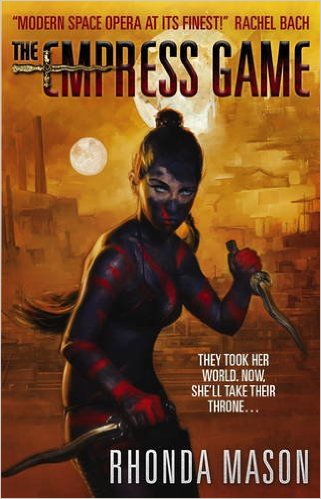[button color=”black” size=”big” link=”http://affiliates.abebooks.com/c/99844/77798/2029?u=http%3A%2F%2Fwww.abebooks.com%2Fservlet%2FSearchResults%3Fisbn%3D9780545425315″ target=”blank” ]Purchase here[/button]
Faces of the Dead has a fascinating premise—Princess Marie-Thérèse-Charlotte, daughter of Marie Antoinette, switches places with her lookalike maid during the French Revolution in the late 1790s. She finds herself living on the streets of Paris and soon becomes a ward of the talented wax sculptor Mademoiselle Grosholtz, the woman who will later find fame as Madame Tussaud. Throw in a little romance, throw in a little magic, and it seems like you have a recipe for a great book. Unfortunately, author Suzanne Weyn has a bit of trouble pulling it off.
The book is being marketed as a younger YA, 12 & up, but it reads more like a middle grade novel for 8-12 year olds. Despite the mentions of beheadings and executions, which are fairly mild, the prose—and action—is just too naive for older readers. Marie is sixteen years old when her family is captured and she is forced out on the street, where she immediately goes to live with Henri, a slightly older boy she met on an earlier excursion out to the city in disguise, and his family. They live together for over a year (prompted by the awkward joiner of “In the year that I’ve been in Paris” at the beginning of a chapter immediately after her family is imprisoned), but somehow, despite mutual attraction, have never even kissed until halfway through the short book, an event which is marked with the sentence: “I’m happy my first kiss is from Henri because I love him so much.” Also what is ostensibly a make-out session is ostensibly described as “We kiss and hug each other for what seems like a very long time.”
Look, I’m not romance hungry—I can take it or leave it, whatever makes sense for the story—but this just doesn’t work. It’s not how teenagers, especially older ones, act. And that’s to say nothing of the extremely brief time given to the emotional development of Ernestine, the serving girl who takes the place of Marie in prison. Her attitude throughout the whole thing is basically just as a complete pushover completely willing to sacrifice her liberty, and potentially life, for Marie, with very little in return. People are at least a little conflicted when they make decisions like that! Faces of the Dead, while boasting an imaginative premise, just doesn’t follow through logically, and at a slim 194 pages doesn’t leave the reader with a satisfying story.
The book does have some merit. I work at a bookstore, and if I had a younger reader who was interested in historical events, I might very well recommend this book to them. Though Faces of the Dead necessarily has to gloss over many of the details and nuances of the complicated political and social events that surrounded the French Revolution, it does succeed at imparting some facts about the event, and the rather miraculous ending softens the blow of the violence a bit. I will probably pass the book along to my nine-year-old sisters, who no doubt will enjoy it. Though even as a middle grade novel it doesn’t stand up to masters such as Kate DiCamillo or Jack Gantos, young readers may be able to primarily appreciate Weyn’s powerful imagination rather than fixate on the mis-fired execution.


